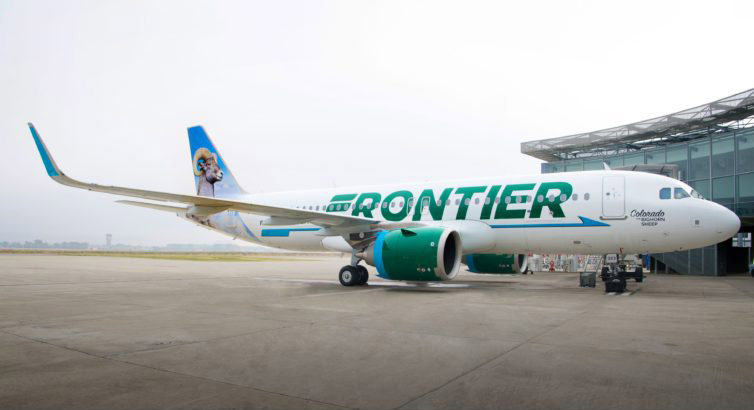
A Frontier Airbus A320neo at the Airbus Delivery Center – Photo: A. Doumenjou | Airbus
In the last few years, engine technology has improved significantly for narrowbody aircraft. The competitive nature of the current short-haul U.S., European, and Asian domestic markets have airlines competing on cost and efficiency to offer the lowest possible ticket prices to their customers. The single biggest direct cost on almost all routes is the fuel that the aircraft burns, and burning less fuel is always better. Frontier Airlines is one of a few Ultra Low Cost Carriers (ULCC) in the U.S. that has been aggressively pursuing a modern, fuel efficient, all economy-class fleet to complement their ULCC business model. They are a U.S. launch customer for the Airbus A320neo (or New Engine Option) family of aircraft and also operated some of the first commercial flights with the CFM LEAP-1A engine. I was lucky enough to ride on one of these shiny new aircraft and talk to the flight crew about how it is changing the way we fly.
- A sunny day in DTW. Thanks to the Captain for some great pictures! Photo: Kevin Horn
- En-route to DEN high above the clouds. It’s great how quiet these new engines are at cruise. Photo: Kevin Horn
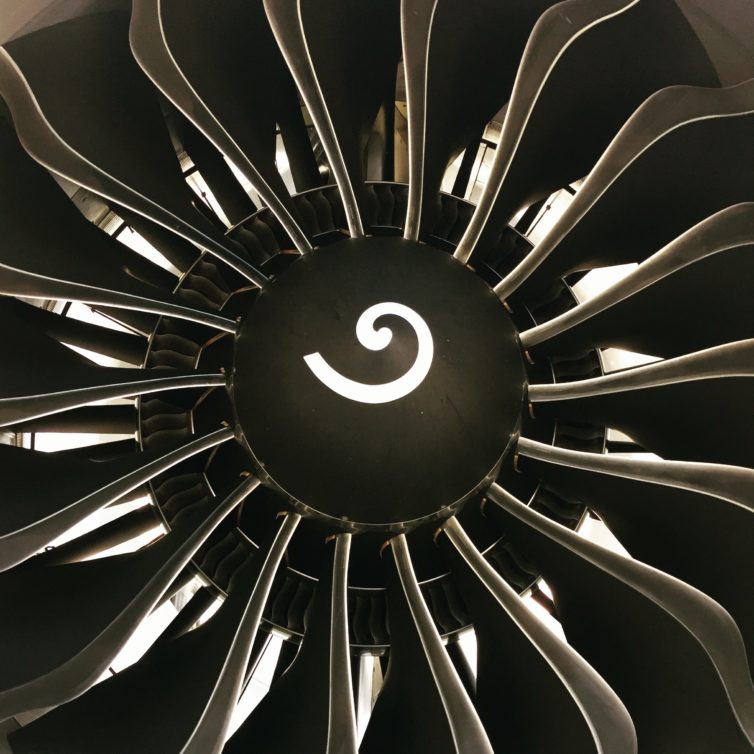
The carbon-composite blades of the fan are highly sculpted for efficient flow. And fewer of them makes for less weight and noise. The inner ring of smaller blades is the core inlet. This makes a great phone background – just saying… Photo: Kevin Horn
Frontier took delivery of their first LEAP-powered A320neo in September 2016 and began revenue service shortly thereafter. The A320neo aircraft in Frontier’s fleet are powered by CFM LEAP-1A engines which are designed and manufactured through a 50-50 joint venture between the U.S.’s GE Aerospace and France’s Safran. This engine incorporates the latest in materials and advanced manufacturing as well as complex 3D aerodynamic shapes in the blades to produce a step-change in fuel efficiency for the aircraft. Two production lines exist in the respective countries and the Airbus A320neo is the first of three variants to fly. The CFM LEAP-1A is for Airbus, LEAP-1B is for the Boeing 737MAX which is just entering revenue service with airlines around the world. The LEAP-1C is undergoing test flights on the Comac C919, which is a new Chinese narrow-body aircraft currently in development.
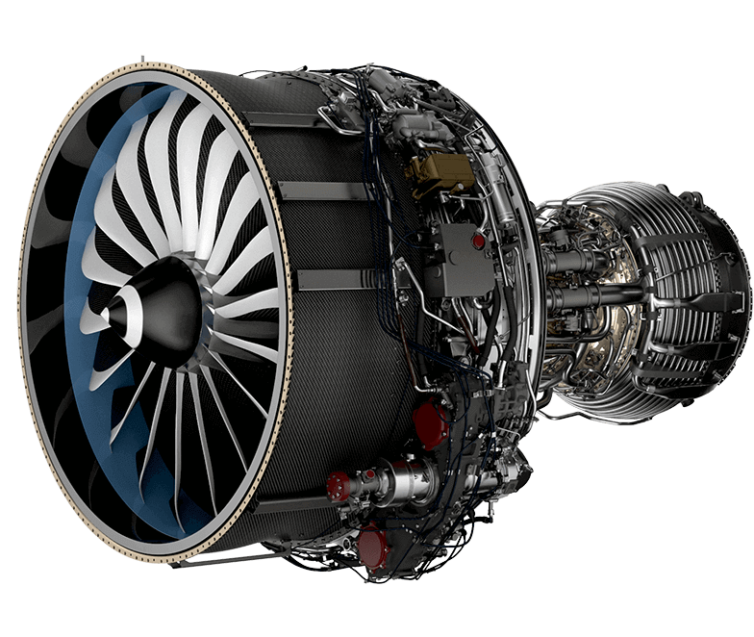
The CFM LEAP in all of its un-shrouded glory – Photo: CFM Aero Engines
The New Engine Option on the A320 is meant to convey the scope of the upgrade. Airbus continues to manufacture the renamed A320ceo (or Current Engine Option) family of aircraft at multiple sites around the globe. They have built over 6,000 of these aircraft and they can be seen crossing the sky over every populated continent. The Current Engine Options are the CFM56 and the IAE V2500 series of engines. Both are manufactured through partnerships between the major OEMs, again with CFM (GE-Safran) and IAE (Pratt and Whitney-Rolls Royce). While advanced at the time and upgraded over the years, these engines fundamentally represent 30-year-old engine technology and are reaching the limits of their architecture. The CFM LEAP turbofan and Pratt & Whitney PW1000 series GTF (Geared Turbofan) engines promise to greatly improve fuel burn, reduce cabin and external noise, and increase performance for existing and new aircraft types in service.
Key Technologies and Their Impact on Efficiency
The LEAP-1A engine has a number of key technologies that come together to improve performance at nearly every stage of an aircraft’s flight. The major areas of improvement are new higher bypass ratio fan, carbon-fiber fan blades with 3D aerodynamics, ultra-high-temperature materials in the high-pressure turbine, and advanced nacelle aerodynamics. If this jargon means nothing to you, don’t worry, I’ll explain and you’ll be an expert in no-time! All together, both the LEAP-1A and PW1000 GTF series engines promise 15% fuel burn reduction at service entry.
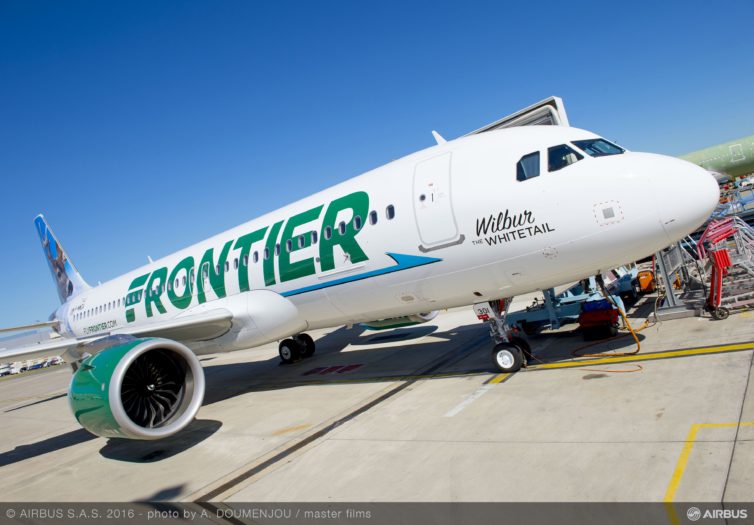
Frontier’s first A230neo, Wilbur the Whitetail – Photo: Airbus
Spotting one of these aircraft in the wild is easy when you look for the massive engines under the wings. The blades you see at the front of the engine make up the fan and provide the majority of the thrust. Similar to a fan at home, these blades move a very large volume of air, with more than 90% passing around the core and out the back. You may also notice that these blades are black versus bare metal, they’re made of carbon fiber reinforced plastic (CFRP), the miracle material that you hear about in race cars and fighter jets. The CFRP blades can be made thinner, wider, and longer than titanium, allowing fewer blades with more sophisticated shapes to more efficiently pull cool air through the engine. All of these benefits contribute to less noise, lower fuel consumption, and fewer emissions.
The fan blades provide most of the thrust but the core of the engine makes the power for the fan and the rest of the systems onboard the aircraft. The core is the portion of the engine that burns the fuel, and in turn, creates some thrust but most of the energy is pulled out through a turbine to power the fan. In the core, there are many key advancements that work together to increase the efficiency primarily through higher pressures and temperatures. A hotter running engine can more efficiently extract power from the burning fuel; in some parts the temperatures are hotter than the melting point of steel!
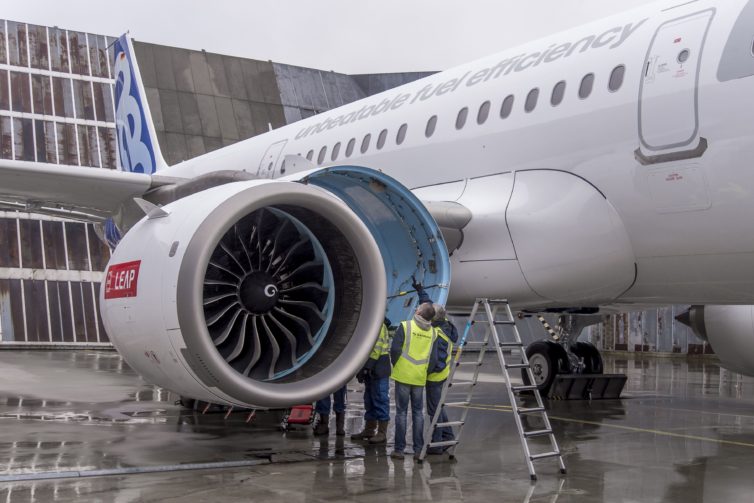
A closeup of a CFM LEAP on an A321neo prototype. Notice the full-size humans for scale! – Photo: Airbus
To withstand temperatures beyond the melting point of metals and as high as 3200°F or 1750°C in the turbine, an all-new generation of materials is required. Ceramic Matrix Composite (CMC) materials are a material specifically designed to be both lightweight and to have extremely high melting temperatures. Similar to the porcelain ceramic in your dishes at home, CMC isn’t made of metal and can withstand both the high temperatures and pressures of the new engines without melting.
Finally, the nacelle housing the engine is significantly redesigned to reduce drag and improve thrust efficiency. With a tighter fit around the engine, and improved aerodynamics both around and leading into the engine, the drag penalty due to the larger fan is minimized.
So what do these improvements mean for the flying public?
- An aircraft that burns less fuel is a more efficient aircraft. That means lower-cost tickets for passengers, and better economics for airlines.
- Increased range for the same amount of fuel means airlines are experimenting with new routes, both trans-continental, and trans-Atlantic of 3,500 NM (6,482 km, 4,028 mi) or more. This opens routes that haven’t been possible or economical with existing fleets of A320ceo or 737NG aircraft.
More Bypass More Problems
Coverage of the A320neo is not complete without mentioning the issues faced during introduction of these advanced, ultra-high-bypass turbofan engines. The new technologies critical to the improvements over older engines have also lead to significant issues for early operators in commercial service.
The CFM LEAP-1A engines equipped on the aircraft reviewed here have experienced some some introductory issues across the fleet. Most significant has been a shortfall in guaranteed fuel burn. Fuel costs over the life of an aircraft can exceed the purchase cost of an aircraft (2017 List Price for A320neo is $108.4 million USD) so an increase in fuel burn by just a few percent over guaranteed values can lead to millions of dollars in additional costs for an airline. A rumored 2%-3% shortfall with the LEAP-1A has made this engine less desirable than the competing Pratt & Whitney PW1100G GTF to prospective fleet owners and has skewed the order book in favor of Pratt & Whitney.
The extent of the difference between the two engines isn’t public as actual fuel burn metrics are tightly guarded proprietary information by airlines and manufacturers. On the contrary, CFM has touted a more mature engine at service entry, with fewer problems than the Pratt & Whitney PW1100G has faced.
- An Airbus A320neo with Pratt & Whitney engines on the stand at Toulouse. Photo: Airbus
- An A320neo prototype on the ramp at Toulouse. Photo: Airbus
While not affecting the CFM LEAP-1A powered aircraft in this article, the issues faced by the Pratt & Whitney PW1100G equipped fleet have been significant and persistent since introduction. Interestingly enough, most of the problems have not stemmed from the high-risk technology addition to the engine architecture – the Geared Turbofan; the gear train has proven to be mostly reliable. Introduction has been hampered due to implementation issues across other areas of the engine including rotor bow, combustor durability, turbine seals, main bearing carbon seal wear, and limited availability of spare engines.
Qatar Airways secured a high-profile spot as a launch customer of the P&W-powered A320neo. They were scheduled to take the first production aircraft but notably delayed and ultimately deferred all of their A320neo aircraft. During testing, it was discovered that the engines were susceptible to a condition called rotor bow, in which the rotors on which the fan, compressor, and turbine blades are attached experience a small amount of bend when shutdown and restarted between typical flights. The deflection causes interference between the blades and the shroud, leading to premature wear, increased engine startup times, and significantly increased maintenance and downtime costs for each aircraft. These downsides were deemed unacceptable by Qatar, leading to the cancellation of a 50 aircraft order, and ultimately an up-gauging to the A321neo with delayed delivery from 2019 on and CFM LEAP-1A engines.
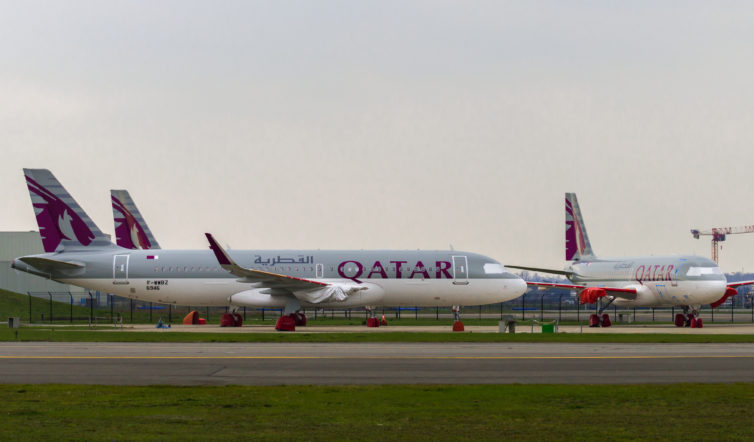
Qatar Airways A320neo aircraft sit without engines in Toulouse. Qatar cancelled their entire A320neo order due to performance shortfalls. The aircraft in the foreground F-WWBZ sn:6496 was repainted and delivered to IndiGo after months in storage. Photo: Gyrostat (Wikimedia, CC-BY-SA 4.0)
With more aircraft in service, new problems emerged. The largest operator of P&W A320neo aircraft, IndiGo with a planned fleet of 480, began observing premature combustor liner wear in their fleet. Exacerbated by the hot and humid climate of the Indian subcontinent and high cycle rate of short Indian domestic flights, the non-metallic liner that protects the combustor from the high temperatures began to erode and crack much earlier than anticipated in many aircraft.
Similar to the erosion of the combustor liner, premature wear in the carbon air seals supporting the shafts and high pressure compressor knife-edge seals have introduced significant operational and safety issues for early operators. The degredation HPC knife-edge seals in some of the newest aircraft have lead to rejected takeoffs and in-flight shutdowns of engines, and an airworthiness directive by the EASA has led to a grounding of affected aircraft and a halt to new deliveries of engines by Pratt & Whitney to Airbus from February 2018 until at least April 2018.
Airbus CEO says about A320neo engine issue: “we have been in permanent crisis management for at least the last 2, 3 years” https://t.co/p7Nm4qGLkw via @WSJ
Robert Wall (@R_Wall) February 15, 2018
The repair of many of these damaged components involves removing the affected engine from the wing, disassembly, and reinstallation.
There were also another 41 premature engine removals caused by two known issues with the PW1100G, including 28 attributed to distress in a carbon-air seal for the No. 3 bearing and 13 caused by degraded combustion chambers. – Flight Global
With short-haul aircraft flying as many as 18 hours a day, there is just enough downtime in the schedule for regular maintenance, not major overhauls. The solution for quicker repair is to swap in a spare engine in most cases, but on a fleet with many issues, Pratt & Whitney has not been able supply enough engines to Airbus to meet delivery targets, much less additional spares. Without spares, aircraft awaiting maintenance are grounded until redesigned parts become available, and aircraft at the factory sit without engines.
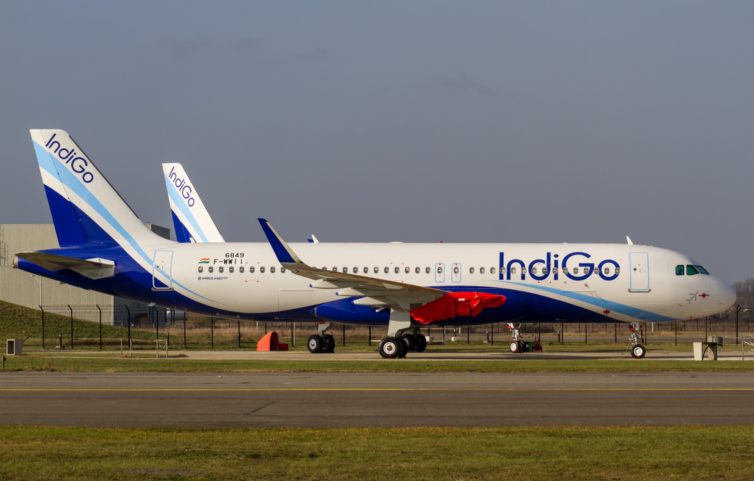
An IndiGo A320neo awaits its GTF engines from Pratt & Whitney at Airbus HQ in Toulouse. Until then it’s the “no engine option” or commonly referred to in industry as a glider. Photo: Gyrostat (Wikimedia, CC-BY-SA 4.0)
All together, the introduction of the A320neo has been rocky. But let’s focus on the positives! There has to be advantages to the new technology, and we can experience those today as passengers and crew!
Flying the NEO ’“ Peace and Quiet
Frontier has been integrating the NEO aircraft into their fleet and I was lucky enough to catch one by chance on a flight from DTW to DEN in September.
I asked nicely to pre-board so I could geek out with the pilots for a few minutes. The Captain of the aircraft was amazing and let me take a peek at the cockpit. She explained some of the differences up front, which were minor from an operational perspective. The increased payload and range have nearly eliminated capacity restrictions even at tough airports like Denver, Salt Lake City, and Las Vegas that routinely see hot and thin air. Credit goes to the new engines which have more performance and require less fuel loaded onboard for the same route, reducing takeoff weight.
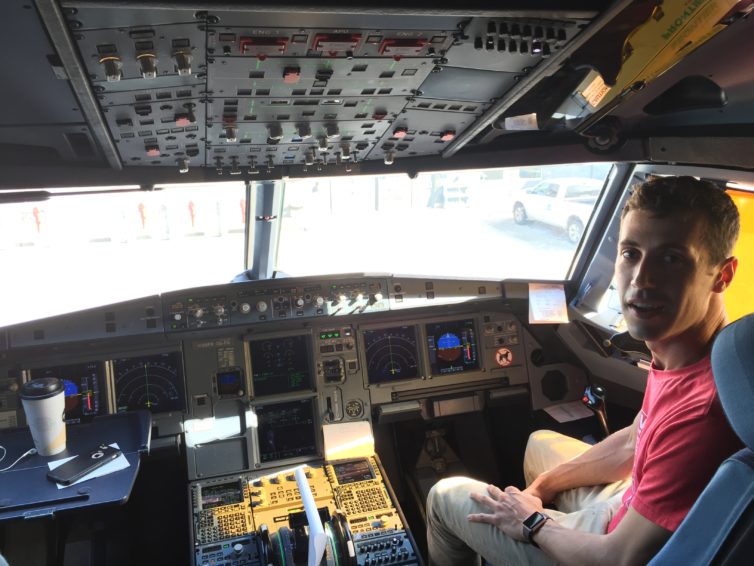
Checking out the cockpit. The pilots said the transition from the A320ceo was easy but really appreciated the flexibility of higher performance engines and a lighter fuel load on every flight. – Photo: Kevin Horn
Overall, the best compliment that I can give the A320neo as a passenger is there is nothing significant to report! The flight was certainly quieter to my non-scientific ears during all phases of flight. A low hum from the 18 fan blades on each engine was about all you can hear coming into the cabin. Lufthansa calculated a 50% reduction in the takeoff noise contour compared to the A320ceo and I think this will be really appreciated onboard as well. If you’re cabin crew or just someone who spends more time flying than you’d like to admit, the reduced sound level on any A320neo or 737MAX will be noticed and appreciated right away; most casual passengers won’t notice.
The most significant change on the interior of the aircraft is the clever packaging of the rear galley and lavatory. Two bathrooms now sit against the rear bulkhead although one is disguised as a cabin crew jump seat, normally folded up in cruise. With the new galley and lavatory arrangement, an entire row of seats (6 total) can be added to the A320 aircraft without stretching the fuselage, which means more revenue for airlines for minimal additional trip cost. Some really despise these “efficient” layouts, but I found the seats and lavatories passable for a two-hour flight.
We pushed back on schedule and engine startup time was on-par with any other narrow-body aircraft in service. I didn’t have my avgeek stopwatch on me during push back to verify if startup took longer to alleviate rotor bow.
Frontier has a consistent product across all aircraft: all-economy slimline seats at 29’ of pitch with no recline and 3 rows of ’œStretch’ seating up front with 32’-33’ of pitch, full tray tables, and a few degrees of recline. My partner and I are no stranger to the Frontier flight experience and it’s actually one of our favorite airlines because of the consistent product and low fares. One thing interesting to note about Frontier: the middle seat (B or E) in all rows is wider than the window or aisle seat by about an inch. It’s something to consider when buying a seat assignment.
Conclusion ’“ One Giant LEAP for Narrowbody Aircraft
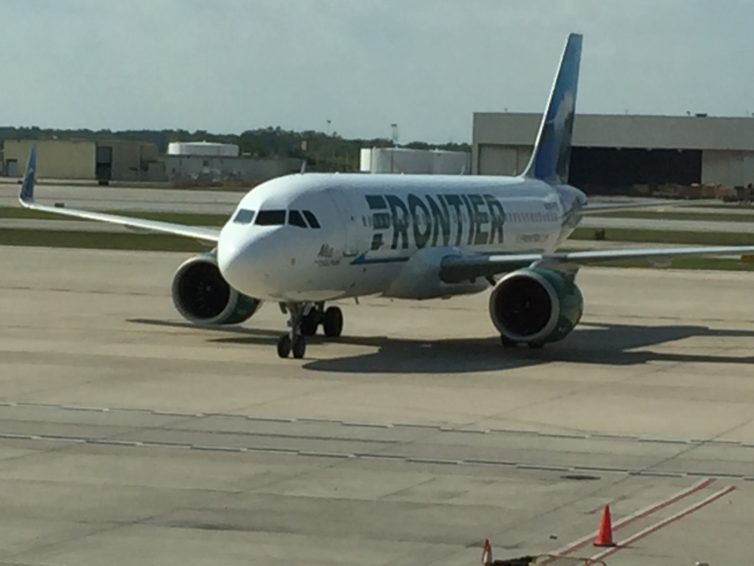
As my aircraft pulled into the gate, I realized I was in for my first ride with the new engines under the wings. Photo quality reduced for millennial-hipster vintage flair! – Photo: Kevin Horn
If you spend a lot of time up in the air, get excited for the newest generation of A320 and 737 that are about to enter widespread revenue service. The aircraft are quiet both from the ground and in the air. Operationally, lower costs and greener aircraft are good for everyone. The new, longer routes promise to make medium-haul travel more accessible to more people. Nearly every major airline in the world has large orders placed for these LEAP and GTF powered aircraft, so you won’t have to wait long to snag a seat on one of these new birds.
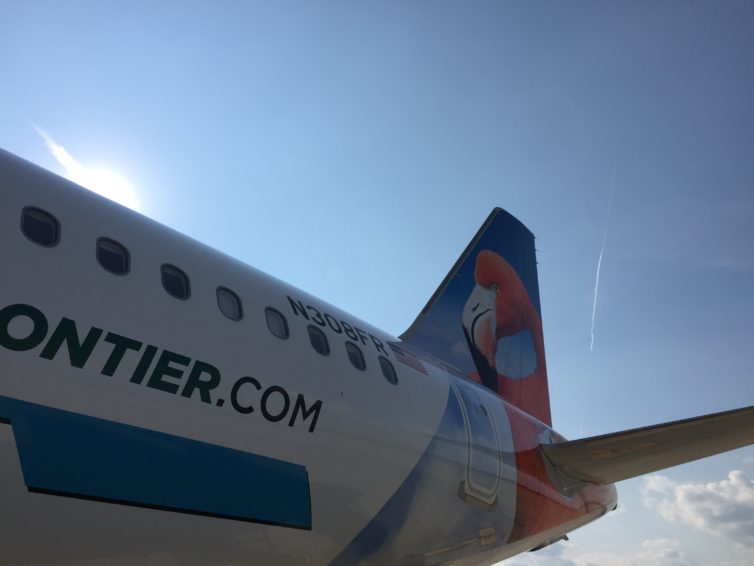
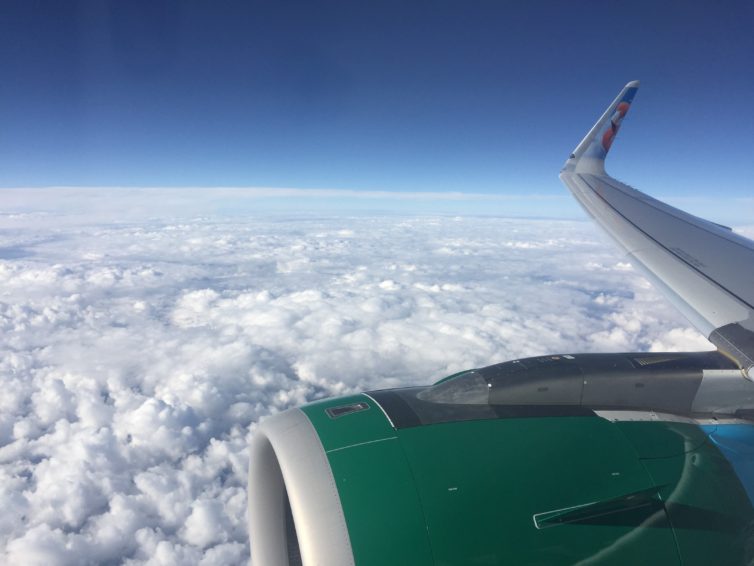
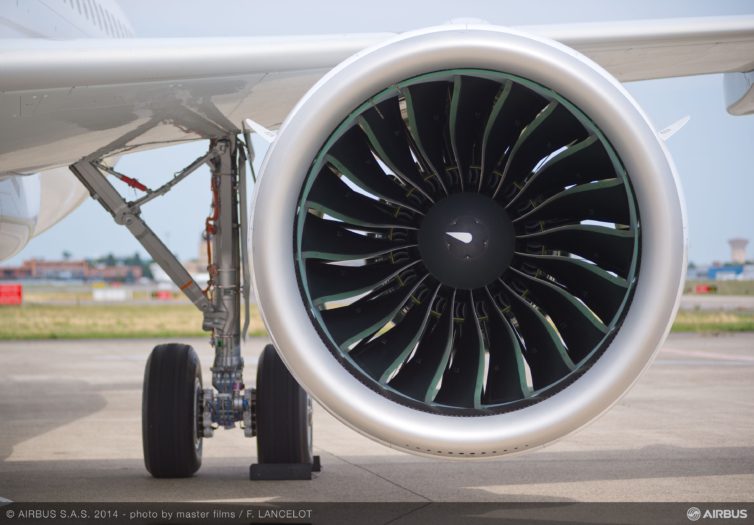
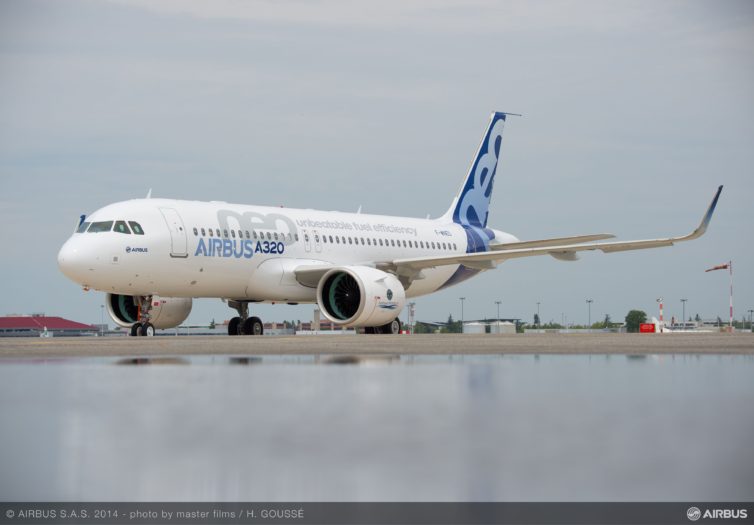
Surprised that the engine issues were not exposed during extensive flight testing for both types…or maybe they were? I know that it can be difficult to replicate airline usage in flight test, but in this case of quick turns I’m not sure.
Anyone have insights on this?
Don’t fly frontier. They will rip you off. I’ve been on frontier 3 times and 3 times they list my bags, they even want to charge you for a coke and snack, with as much as you pay for a ticket they should be free. Southwest and American don’t charge. I won’t be flying frontier anymore
“with as much as you pay for a ticket, they should be free”
The point of a ULCC (Ultra Low Cost Carrier) is that you only pay for what you use, so the ticket is cheaper. Often offering special fares of $29 one-way, even regular prices aren’t very high, sometimes a little over $100, depending on where you fly. Compare that to a Greyhound bus or train, or gas for driving, you just can’t get that far, that fast any other way. So if you’re saving $50, $100, or $100’s compared to other forms of travel, or even other airlines, I think $3 bucks for a soda is not going to break the bank. They do the same thing at convenience stores and sports arenas and movie theaters. And people don’t complain about that, they just plan accordingly and either bring their own (where allowed), or buy the minimum they want/need.
So, Iona, do you get a free drink and snack at the theater? Or at a football or baseball game??? With the high price you pay, shouldn’t the snacks and beverages be FREE?? Hmmmm, $150(and up) for an NFL ticket, and you STILL pay extra for snacks and beverages. $29 ONE WAY on Frontier, i can afford a $3 snack and beverage. You pay at least, $200 or more one-way on other airlines and your snacks are included. So many choices, cheap or expensive airline. YOUR CHOICE!
The NEO’s do take about a minute longer to start if the plane was flown within a few hours prior. They spool up to about 29% – 30% rpm, then “motor” along at that rpm for about 30-60 seconds before adding fuel & spark, & continuing the start. If the aircraft sat overnight, they start normally, like the ceo engines.
So, Iona, do you get a free drink and snack at the theater? Or at a football or baseball game???
I have flown on a Frontier flight with the new neo engines and I can say from experience that it is substantially quieter, you can almost hear no engine noise at all.